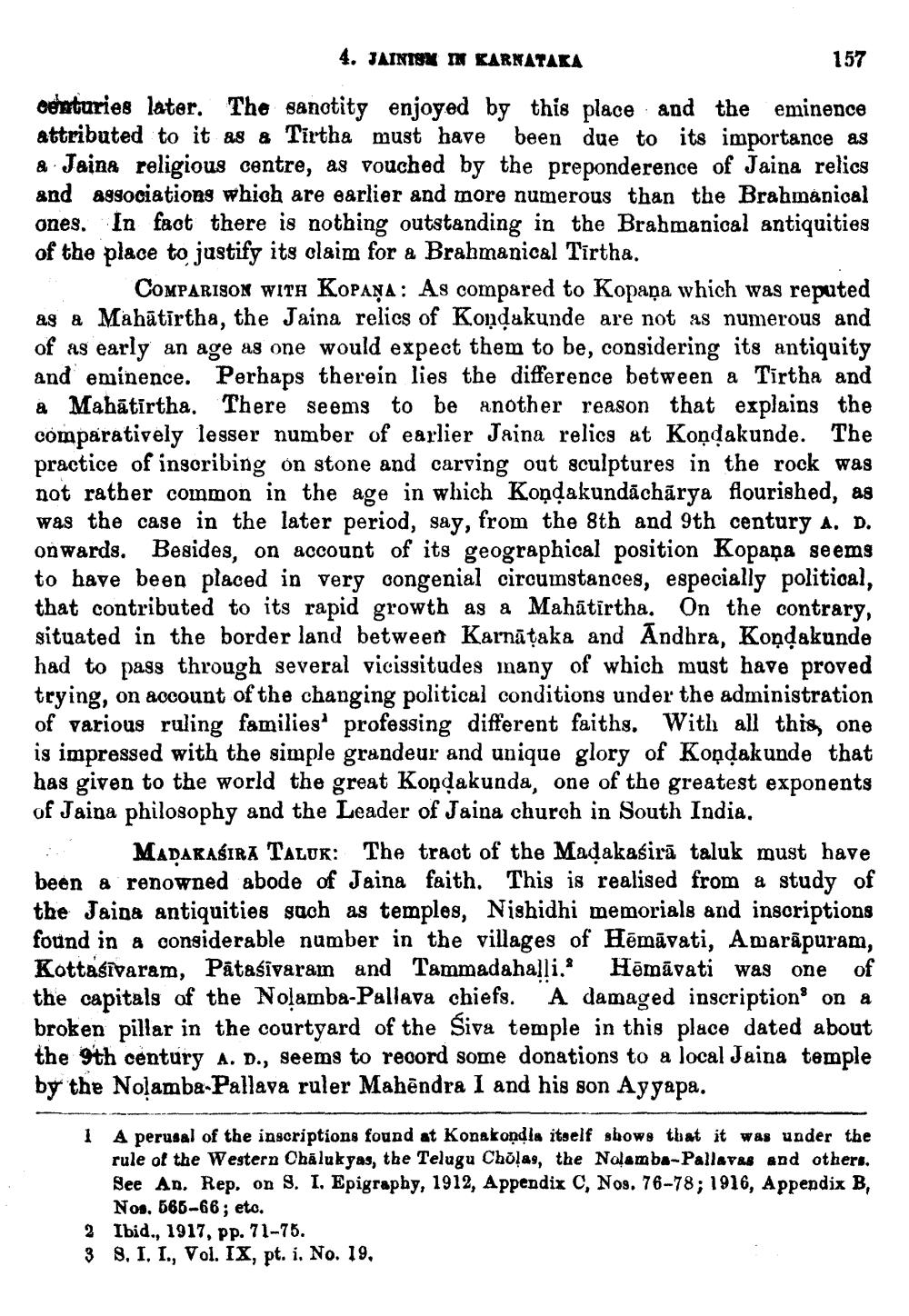________________
4. JAINISM IN KARNATAKA
157
centuries later. The sanotity enjoyed by this place and the eminence attributed to it as & Tirtha must have been due to its importance as & Jaina religious centre, as vouched by the preponderence of Jaina relics and associations which are earlier and more numerous than the Brahmánical ones. In faot there is nothing outstanding in the Brabmanical antiquities of the place to justify its claim for a Brahmanical Tirtha.
COMPARISON WITH KOPAŅA: As compared to Kopaņa which was reputed as a Mahātirtha, the Jaina relics of Kondakunde are not as numerous and of as early an age as one would expect them to be, considering its antiquity and eminence. Perhaps therein lies the difference between a Tirtha and a Mahātirtha. There seems to be another reason that explains the comparatively lesser number of earlier Jaina relics at Kondakunde. The practice of inscribing on stone and carving out sculptures in the rock was not rather common in the age in which Kondakundāchārya flourished, as was the case in the later period, say, from the 8th and 9th century A. D. onwards. Besides, on account of its geographical position Kopaņa seems to have been placed in very congenial circumstances, especially political, that contributed to its rapid growth as a Mahātirtha. On the contrary, situated in the border land between Karnātaka and Andhra, Kondakunde had to pass through several vicissitudes many of which must have proved trying, on account of the changing political conditions under the administration of various ruling familiesa professing different faiths. With all this, one is impressed with the simple grandeur and unique glory of Konďakunde that has given to the world the great Kondakunda, one of the greatest exponents of Jaina philosophy and the Leader of Jaina church in South India.
I MADAKASIRA Taluk: The tract of the Maďakasirā taluk must have been a renowned abode of Jaina faith. This is realised from a study of the Jaina antiquities such as temples, Nishidhi memorials and inscriptions found in a considerable number in the villages of Hēmāvati, Amarapuram, Kottasīvaram, Pātasīvaram and Tammadahalli. Hēmāvati was one of the capitals of the Nolamba-Pallava chiefs. A damaged inscriptions on a broken pillar in the courtyard of the Siva temple in this place dated about the 9th century A. D., seems to record some donations to a local Jaina temple by the Nolamba-Pallava ruler Mahendra I and his son Ayyapa.
1 A perusal of the inscriptions found at Konakondla itself shows that it was under the
rule of the Western Chalukyas, the Telugu Cholas, the Nolamba-Pallaves and others. See An. Rep. on 9. I. Epigraphy, 1912, Appendix C, No. 76-78; 1916, Appendix B
Nos, 566-66; eto. 2 Ibid., 1917, pp. 71-75. 3 8. I. I., Vol. IX, pt. i. No. 19,




